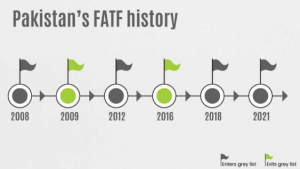THE INDIAN POLITY AND GOVERNANCE
1.THE DEMOCRACY REPORT 2022
THE CONTEXT: According to the latest report titled ‘Democracy Report 2022’, which is released by V-Dem Institute at Sweden’s University of Gothenburg, stated that One of the biggest drivers of autocratisation is “toxic polarisation”, a dominant trend in 40 countries, as opposed to 5 countries that showed rising polarisation in 2011.
THE EXPLANATION:
What are the main findings of the report?
- Sweden topped the LDI index, other Scandinavian countries such as Denmark and Norway, along with Costa Rica and New Zealand make up the top five in liberal democracy rankings.
- Autocratisation is spreading rapidly, with a record of 33 countries autocratising. Signaling a sharp break from an average of 1.2 coups per year, 2021 saw a record 6 coups, resulting in 4 new autocracies: Chad, Guinea, Mali and Myanmar.
- While the number of liberal democracies stood at 42 in 2012, their number has shrunk to their lowest level in over 25 years, with just 34 countries and 13% of the world population living in liberal democracies. Closed autocracies, or dictatorships, rose from 25 to 30 between 2020 and 2021.
- While the world today has 89 democracies and 90 autocracies, electoral autocracy remains the most common regime type, accounting for 60 countries and 44% of the world population or 3.4 billion people. Electoral democracies were the second most common regime, accounting for 55 countries and 16% of the world population.
What parameters were used to assess the status of a democracy?
- V-Dem’s conceptual scheme takes into account not only the electoral dimension (free and fair elections) but also the liberal principle that a democracy must protect “individual and minority rights against both the tyranny of the state and the tyranny of the majority”.
- The V-Dem report classifies countries into four regime types based on their score in the Liberal Democratic Index (LDI): Liberal Democracy, Electoral Democracy, Electoral Autocracy, and Closed Autocracy. The LDI captures both liberal and electoral aspects of a democracy based on 71 indicators that make up the Liberal Component Index (LCI) and the Electoral Democracy Index (EDI).
- The LCI measures aspects such as protection of individual liberties and legislative constraints on the executive, while the EDI considers indicators that guarantee free and fair elections such as freedom of expression and freedom of association.
- In addition, the LDI also uses an Egalitarian Component Index (to what extent different social groups are equal), Participatory Component Index (health of citizen groups, civil society organisations), and Deliberative Component Index (whether political decisions are taken through public reasoning focused on common good or through emotional appeals, solidarity attachments, coercion).
What does the report say about India?
- The report notes that India is part of a broader global trend of an anti-plural political party driving a country’s autocratisation.
- Ranked 93rd in the LDI, India figures in the “bottom 50%” of countries. It has slipped further down in the Electoral Democracy Index, to 100, and even lower in the Deliberative Component Index, at 102. In South Asia, India is ranked below Sri Lanka (88), Nepal (71), and Bhutan (65) and above Pakistan (117) in the LDI.
What does the report say about the changing nature of autocratisation?
- One of the biggest drivers of autocratisation is “toxic polarisation” — defined as a phenomenon that erodes respect of counter-arguments and associated aspects of the deliberative component of democracy — a dominant trend in 40 countries, as opposed to 5 countries that showed rising polarisation in 2011.
- The report also points out that “toxic levels of polarisation contribute to electoral victories of anti-pluralist leaders and the empowerment of their autocratic agendas”. Noting that “polarisation and autocratisation are mutually reinforcing”, the report states that “measures of polarisation of society, political polarisation, and political parties’ use of hate speech tend to systematically rise together to extreme levels.”
- The report identified “misinformation” as a key tool deployed by autocratising governments to sharpen polarisation and shape domestic and international opinion. Repression of civil society and censorship of media were other favoured tools of autocratising regimes.
- While freedom of expression declined in a record 35 countries in 2021, with only 10 showing improvement, repression of civil society organisations (CSOs) worsened in 44 countries over the past ten years, “putting it at the very top of the indicators affected by autocratisation”. Also, in 37 countries, direct government control over CSOs’ existence moved in an authoritarian direction — “evidence of the far-ranging weakening of civil society around the world.”
- Significantly, the report also found that decisive autonomy for the electoral management body (EMB) deteriorated in 25 countries.
2. INTER-STATE RIVER WATER DISPUTES
THE CONTEXT: Karnataka Government said, its stand clear to the Centre against any kind of negotiation on water issues with neighboring States where tribunal award has been granted.
THE EXPLANATION:
- According to the Water resource Minister of the state, Karnataka has the right on water and the right has been established by the tribunal awards. Negotiable settlement is not advisable after tribunal awards. In case of Cauvery and Mahadayi rivers, the Centre has already gazetted the awards and Krishna Tribunal 2 award is yet to be gazetted”.
Background:
What is Cauvery water dispute?
- The dispute started in 1892 when the Madras Presidency and princely state of Mysore could not agree over how to divide the water between the two regions. However, the British presided and an agreement was made between the two regions regarding the rules of water usage of Krishna Raja Sagar (KRS) dam.
- According to the agreement in 1924, Tamil Nadu and Puducherry would get 75% of the surplus water, while Karnataka would get 23% and the remaining would go to Kerala. However, post Independence when the re-organisation of states started Tamil Nadu and Karnataka came in dispute over the construction of dams on the river. Karnataka refused to abide by the old agreement which became a huge problem for Tamil Nadu’s agricultural requirements.
- Later Tamil Nadu moved to Supreme Court to resolve the issue. As a result the Cauvery Water Disputes Tribunal (CWDT) was formed which directed Karnataka to ensure 205 tmcft of water reach Tamil Nadu per annum. Karnataka rejected the tribunal’s award and sought for an annulment in the Supreme Court. Since then, there have been various attempts to resolve the issue between the two states, but nothing has worked.
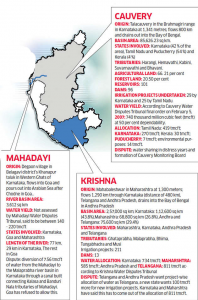
What is the Mahadayi river dispute?
- The dispute over Mahadayi river began in the 80s and grew stronger in the subsequent decades. The trigger was Karnataka’s move to design a number of dams, canals and barrages to route the Mahadayi river water to the Malaprabha basin.
- The state claimed that channelling the river water into the basin of Malaprabha, a tributary of the Krishna, would meet the requirements of water-scarce districts of Bagalkot, Gadag, Dharwad and Belagavi.
- Goa, seeking redressal to the dispute in 2002, sought the constitution of a water disputes tribunal. The state also moved the apex court in 2006 with its demand. After sustained efforts by the Goan government, the Mahadayi Water Disputes Tribunal was set up on November 16, 2010.
- The dispute is also around the amount of water that Goa receives. Karnataka claims that the surplus from Mahadayi drains into the sea and that it should be diverted into the deficit basin in Malaprabha to meet the state’s drinking, irrigation, agriculture and power generation needs. Goa has, meanwhile, denied Karnataka’s claims saying it is a water deficient state and limiting the water supply would adversely impact its agriculture production.
| · Mahadayi river rises in the Western Ghats, from the Bhimgad Wildlife Sanctuary in Khanapur taluk of Karnataka’s Belagavi district. Flowing westward, it enters Goa from Sattari taluk of North Goa districts. A number of streams join the flow of the river to form the Mandovi which is one of two major rivers that flow through Goa. It joins the Arabian Sea at Panaji. |
THE INTERNATIONAL RELATIONS
3. PAKISTAN RETAINED FATF’S GREYLIST AGAIN
THE CONTEXT: The Financial Action Task Force (FATF) retained Pakistan in the ‘greylist’ yet again, observing that it needed to further demonstrate that investigations and prosecutions were being pursued against the senior leadership of U.N.-designated terror groups, which include Lashkar-e-Taiba, Jaish-e-Mohammed, al-Qaeda and the Taliban.
THE EXPLANATION: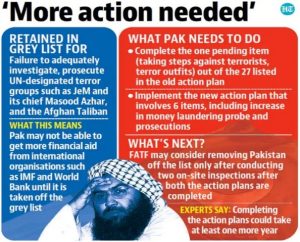
- The FATF had asked Pakistan to work on the remaining recommendation by demonstrating that terror financing investigations and prosecutions targeted senior leaders and commanders of the U.N.-designated terrorist groups.
- It had advised that Pakistan should continue to work to address its six strategically important deficiencies, which included enhancing international cooperation by amending the money-laundering law and demonstrating that assistance was being sought from foreign countries in implementing the UNSCR 1373 designations.
How may Pakistan come off the list?
- The FATF has advised Pakistan that it should continue to work to address its other strategically important AML/CFT deficiencies by:

(1) providing evidence that it actively seeks to enhance the impact of sanctions beyond its jurisdiction by nominating additional individuals and entities for designation at the U.N.;
(2) demonstrating an increase in money laundering investigations and prosecutions and that proceeds of crime continue to be restrained and confiscated in line with Pakistan’s risk profile, including working with foreign counterparts to trace, freeze and confiscate assets.
| The current FATF grey list, countries: Albania, the Bahamas, Barbados, Botswana, Cambodia, Ghana, Iceland, Jamaica, Mauritius, Mongolia, Myanmar, Nicaragua, Pakistan, Panama, Syria, Uganda, Yemen and Zimbabwe.
The current FATF blacklist includes two countries: North Korea and Iran. |
ABOUT FINANCIAL ACTION TASK FORCE (FATF)
- It is the global money laundering and terrorist financing watchdog.
- It was established by the G-7 Summit that was held in Paris in 1989. Secretariat is located at the OECD Headquarters in Paris.
- It has 39 members, On June 25, 2010, India was taken in as the 34th country member of FATF.
- The FATF has developed the FATF Recommendations, or FATF Standards, which ensure a coordinated global response to prevent organized crime, corruption and terrorism.
- The FATF also works to stop funding for weapons of mass destruction.
- FATF has 2 types of lists:
- Black List: Countries knowns as Non-Cooperative Countries or Territories (NCCTs) are put in the blacklist. These countries support terror funding and money laundering activities. The FATF revises the blacklist regularly, adding or deleting entries.
- Grey List: Countries that are considered a safe haven for supporting terror funding and money laundering are put in the FATF grey list. This inclusion serves as a warning to the country that it may enter the blacklist.
- Consequences of being in the FATF grey list: Those countries in the grey list may face economic sanctions from IMF, World Bank, ADB, Problem in getting loans from IMF, World Bank, ADB and other countries, Reduction in international trade, an international boycott.
4. THE EFFECTS OF THE RUSSIA UKRAINE CONFLICT ON MARITIME TRADE
THE CONTEXT: Amid tensions between Russia and Ukraine, the Western economies and its allies have taken retaliatory steps, in the form of heavy sanctions, to effectively paralyse the Russian economy. One industry which is going to be heavily affected is the shipping industry as delays and shipping costs are expected to rise due to disruptions in the global supply chain.
THE EXPLANATION:
What has been the impact globally?
- As crude oil prices go up, the price of ship fuel is also going up. Fuel cost is the biggest contributor to the operating costs of a ship and the increase will have a cascading effect on shipping costs and freight.
- Russia and Ukraine are major traders in grain, minerals and oil so bulk shipping including oil and gas tankers will be significantly affected.
- As Turkey abides by the Montreaux convention, it has banned Russian naval ships from passing through the Bosphorus Strait which leads to the Black Sea.
- Black Sea is home to the few warm water ports the country has and is the theater of the war. As crude oil prices go up, the price of ship fuel, called Bunker fuel, is going up as well. Fuel cost is the biggest contributor to the operating costs of a ship and the increase will have a cascading effect on shipping costs and freight.
What is the role of Turkey in this conflict?
- Turkey controls the entry and exit of Black Sea and hence has a say over ship traffic in the Black Sea. It has banned Russian naval ships from passing through the Bosphorus Strait. Turkey is not a signatory to the United Nations Convention on the Law of the Sea which sees the oceans as commons and allows even warships innocent passage through territorial waters of a nation.
- Turkey abides by the Montreaux convention which gives it greater control over the straits. Free passage is guaranteed for merchant vessels belonging to belligerents in war, especially if Turkey is not a belligerent. The convention also lays down clearly what is a warship and what is not. Having said that, any interpretation to curb Russian merchant ship movement will be a significant escalation and inflame the scenario.
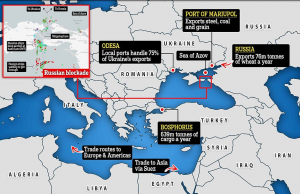
Value Addition:
Montreux Convention:
- The 1936 Montreux Convention Regarding the Regime of the Straits, often referred to as the Montreux Convention.
- Under this convention, Turkey has control over both the Bosporus and Dardanelles straits.
- In the event of a war, the pact gives Turkey the right to regulate the transit of naval warships and to block the straits to warships belonging to the countries involved in the conflict.
- It regulates maritime traffic through the Black Sea.
- It guarantees “complete freedom” of passage for all civilian vessels during peacetime and permits Turkey to restrict the passage of navies not belonging to Black Sea states.
- Military vessels are limited in number, tonnage and weaponry, with specific provisions governing their mode of entry and duration of stay.
- Warships must provide advanced notification to Turkish authorities, which, in turn, must inform the parties to the Convention.
QUICK FACTS:
DARDANELLES STRAIT:

BOSPORUS STRAIT
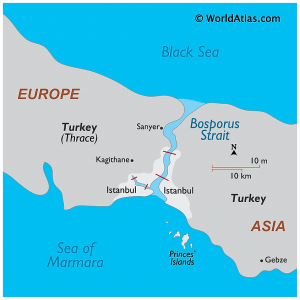
COUNTRIES BORDERED BY BLACK SEA
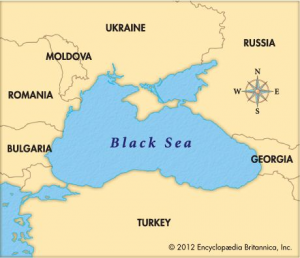
THE ENVIRONMENT AND ECOLOGY
5. HARIKE WETLAND AND WATERBIRD CENSUS EXERCISE
THE CONTEXT: According to the forest officials in the state of Punjab, the year 2022 has been very difficult and challenging in relation to conducting the waterbird census exercise in wetlands of Punjab. The peak migratory bird season overlapped with the outbreak of the third wave of COVID-19 pandemic.
THE EXPLANATION:
- The Wildlife Department of Forests and Wildlife Preservation, Punjab, conducts waterbirds census exercise in six major and most biodiverse wetlands, which include the Nangal Wildlife Sanctuary, the Ropar Conservation Reserve, the Harike Wildlife Sanctuary, the Kanjli Wetland, the Keshopur-Miani Community Reserve and the Ranjit Sagar Conservation Reserve.
- However, the census could not be done this year on account of dense fog conditions.
- The Ropar and Nangal wetlands host the three migratory water species of the family Podicipedidae i.e., black-necked Grebe, Horned Grebe and Greater Crested Grebe along with the resident Little Grebe.
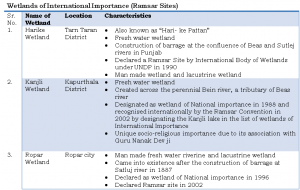
Significance:
Migratory Birds 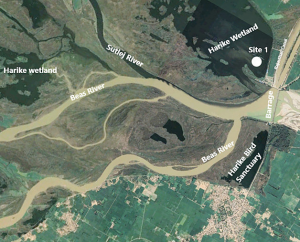
- The wetland is an important area for migratory birds. Every winter, the birds migrate to India through the central Asian flyway which covers a large continental area of Europe-Asia between the Arctic and Indian Oceans.
- Birds such as the Eurasian coot, Greylag goose, Bar-headed goose, Gadwall, and the northern shoveler are the prominent ones that could be sighted at Harike Wetland.
Concerns: Over the years, the number of certain species visiting the wetland are falling. The key reasons attributed to the drop are increased human interference in their breeding regions, oil exploration, use of pesticides in farms, climate change, and rising air and water pollution.
THE SECURITY AFFAIRS
6. THE HYBRID MODEL OF SECURITY
THE CONTEXT: Union Home Minister pitched for a “hybrid” security model where the Central Industrial Security Force (CISF) could train and certify private security agencies so that they can take over the task of efficiently guarding various kinds of industrial and manufacturing units in the country.
THE EXPLANATION:
- According to him, the CISF, raised in 1969, worked like a silent ” karmayogi” to ensure the country’s industrial development and secured the private manufacturing production units as India rode on to become a $2.5 trillion-strong economy.
- Keeping in view the “increasing” drone threat to industrial units along sea ports and the land border, he asked the CISF to collaborate with agencies like the Defense Research and Development Organization (DRDO) and the Border Security Force (BSF) to prepare an effective counter-technology against this menace.
- The force, at present, guards a total of 354 units in the government and private sectors, working in domains such as oil, power, information technology, civil airports, Delhi Metro, aerospace and nuclear, among others.
| What is Hybrid Model of Security?
A hybrid model of security, where the CISF will prepare the strategy and where both private and the CISF personnel can work, can be developed so that the paramilitary force can gradually come out and hand over these tasks to private security agencies. |
Value Addition:
The Central Armed Police Forces (CAPF) refers to seven security forces in India under the authority of the Ministry of Home Affairs.
Central Industrial Security Force (CISF)
- The CISF came into existence in 1969 with a modest beginning, having three battalions, to provide integrated security cover to the Public Sector Undertakings (PSUs).
- Among the important responsibilities recently entrusted to the CISF are the Delhi Metro Rail Corporation, VIP Security, Disaster Management and establishment of a Formed Police Unit (FPU) of the UN in Haiti.
THE PRELIMS PRACTICE QUESTIONS
QUESTION OF THE DAY 7TH MARCH 2022
Q. Consider the following statements about Financial Action Task Force (FATF):
- It was established by the G-7 Summit.
- The FATF has developed the FATF Recommendations, or FATF Standards, which ensure a coordinated global response to prevent organized crime, corruption and terrorism.
- The current FATF blacklist includes two countries: North Korea and Iran.
Which of the statements given above is/are incorrect?
a) 1 only
b) 1 and 3 only
c) 2 and 3 only
d) None
ANSWER FOR 5TH MARCH 2022
Answer: B
Explanation:
- Statement 1 is correct: Human Rights Council is an inter-governmental body within the United Nations system made up of 47 States responsible for the promotion and protection of all human rights around the globe. Members are elected by the UN General Assembly.
- Statement 2 is incorrect: Each elected member serves for a term of three years.
Statement 3 is correct: Countries are disallowed from occupying a seat for more than two consecutive terms.
Spread the Word
